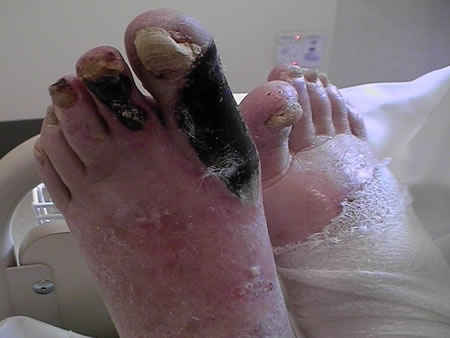In a population-based study, high dietary intake of antioxidants was associated with a lower risk for early age-related macular degeneration (AMD) in genetically predisposed individuals. (1)
The study involved 2167 individuals 55 years or older who were at risk for AMD and who were enrolled in the population-based Rotterdam Study.(2)
The researchers assessed the intake of antioxidants, zinc, and ω-3 fatty acids in daily foods, diagnosed the onset of early AMD during a lengthy follow-up, and investigated the risk-reducing effect of these nutrients in various genetic risk factors.
Incident early AMD occurred in 517 participants.
There appeared to be a possible biological interaction between the CFH Y402H genotype and intakes of zinc, β-carotene, lutein/zeaxanthin, and eicosapentaenoic/docosahexaenoic acid (EPA/DHA), and between the LOC387715 A69S genotype and zinc and EPA/DHA, based on significant synergy indices (P < .05 for all).
- Participants who were homozygous for CFH Y402H and had dietary zinc intake in the highest tertile had a reduction in HR for early AMD from 2.25 to 1.27.
- Similar risk reductions were observed intakes in the highest tertile for β-carotene, lutein/zeaxanthin, and EPA/DHA.
- Among carriers of LOC387715 A69S, those in the highest tertile of zinc intake had a reduction in HR from 1.70 to 1.17; those in the highest tertile of EPA/DHA intake had a reduction in HR from 1.59 to 0.95 (all P trends < .05).
"High dietary intake of nutrients with antioxidant properties reduces the risk of early AMD in those at high genetic risk," the study authors write. "Therefore, clinicians should provide dietary advice to young susceptible individuals to postpone or prevent the vision-disabling consequences of AMD."
"Fortified cereals, meats, dairy products, nuts, and seeds are a good source of zinc; dark-green leafy vegetables such as spinach and kale and orange vegetables including carrots and pumpkin are rich in β-carotene and lutein/zeaxanthin; and oily fish such as herring, salmon, sardines, trout, and tuna provide EPA/DHA," the study authors conclude. "These nutrients are all recommended in the Food Guide Pyramid and should be part of a regular diet for older adults."(3)
1. Ho L, MD, Leeuwen R, Witteman, van Duijn CM, Uitterlinden AG, Hofman A, de Jong PTVM, Vingerling JR, Klaver CCW. Reducing the Genetic Risk of Age-Related Macular Degeneration With Dietary Antioxidants, Zinc, and -3 Fatty Acids, The Rotterdam Study. Arch Ophthalmol. 2011;129(6):758-766. Full text
2. Facts About Age-Related Macular Degeneration. National Eye Institute, USA
Age-related macular degeneration, often called AMD or ARMD, is degeneration of the macula, which is the part of the retina responsible for the sharp, central vision needed to read or drive. It is the leading cause of vision loss and blindness among those age 65 and older.
The cause of AMD has not been determined, but it is clearly a complex disease with multiple environmental and genetic risk factors.
AMD research focuses on the identification and evaluation of genetic risk factors and the interactions of these risk factors with environmental influences. Our hypothesis is that genetic risk factors are critical to the development of AMD. These genetic risk factors then interact with environmental factors (diet, smoking, etc.) to trigger the development of the disease as well as to determine how fast the disease progresses. Identification of these genetic and environmental risk factors is the first step towards earlier detection, prevention, and in the future, better treatments.
3. USDA’s MyPlate officially replaced the Food Guide Pyramid on June 2, 2011
 -----------------------------------------------------------------------------------------------------------
-----------------------------------------------------------------------------------------------------------
BiO-LiF E Bio-Vizion provides the natural carotenoids lutein & zeaxanthin, plus the A.C.E. & Zinc antioxidants. Lutein and zeaxanthin are naturally present in the macula of the human retina.
E Bio-Vizion provides the natural carotenoids lutein & zeaxanthin, plus the A.C.E. & Zinc antioxidants. Lutein and zeaxanthin are naturally present in the macula of the human retina.
BiO-LiFE Bio-Vizion is a unique formula that provides a source of lutein and zeaxanthin preserved in their natural form from marigold flowers. It is also formulated with other anti free-radical nutrients such as Vitamin A,C,E plus the mineral zinc and selenium.
Special 100+30 OFFER valid whilst stocks last. Please check with your pharmacist TODAY!








 Sumber foto:
Sumber foto: 







